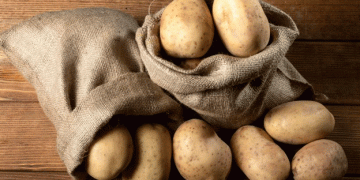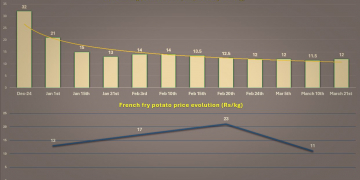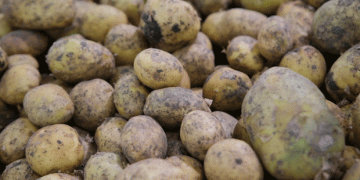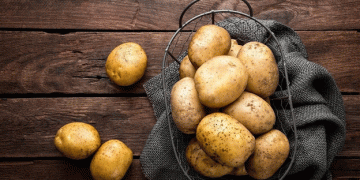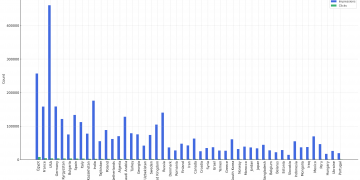In the ever-changing landscape of the potato industry, the recent weather conditions have thrown both challenges and opportunities into sharp relief. Home consumption and retail sales are on the rise, driven by increased demand fueled by the current weather conditions. However, this upward trend is not without its setbacks.
Across the United Kingdom, heavy rainfall has brought harvesting activities to a standstill. Widespread flooding has left fields waterlogged, raising concerns about potential losses in the upcoming harvest. Later planted and late maturing varieties, like Markies, are still in the process of maturing and skin setting. In the East, particularly in the Fens, clearance progress has been sluggish, hovering at around 70%.
Despite these challenges, the potato market in continental Europe paints a different picture. Belgium and France have reported robust yields, marking a 10.2% increase from the previous year. However, in Holland, yields are comparatively lower, and quality concerns, including mishapes, Pink Rot, and Blight, are emerging. Meanwhile, in Germany, some stores have faced unloading due to breakdowns, adding another layer of complexity to the market dynamics.
Looking at the price trends, the market reflects the challenges faced by farmers. Rooster box (new season) prices range from €600 to €650, with an average of €625. Similarly, Rooster 10kg (new season) prices fluctuate between €7.50 and €8, averaging at €7.75. Kerr Pinks 10kg (new season) are priced between €8 and €9, averaging at €8.50. Markie wholesale (chipping) 25kg bag prices stand between €11.50 and €12.50, averaging at €12.
As we approach the bank holiday weekend, there is anticipation in the food service sector for a boost in sales. However, the industry remains cautious due to the unpredictable weather conditions that have disrupted harvesting schedules. Farmers are closely monitoring the situation, adapting their strategies to navigate these challenges and capitalize on the rising demand.
In this volatile market, it is essential for industry stakeholders to stay informed, collaborate, and innovate. Adapting to changing weather patterns and ensuring the resilience of potato cultivation practices is crucial. As consumers continue to enjoy potatoes in various forms, from home-cooked meals to restaurant delicacies, the industry must work collectively to overcome challenges and secure a sustainable future for this vital crop.


